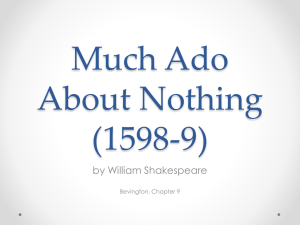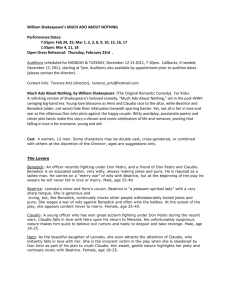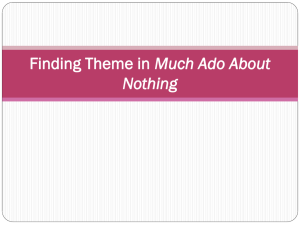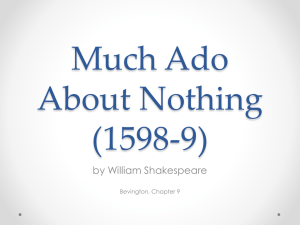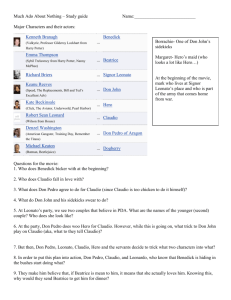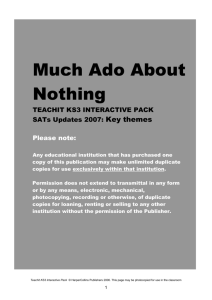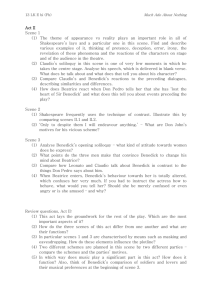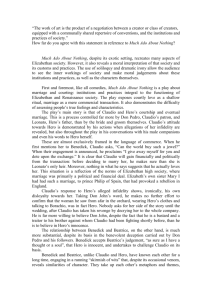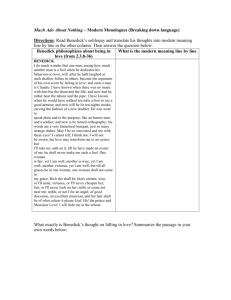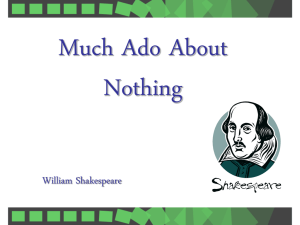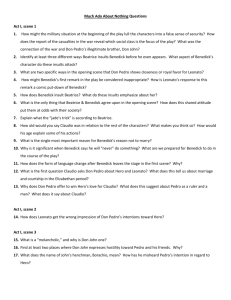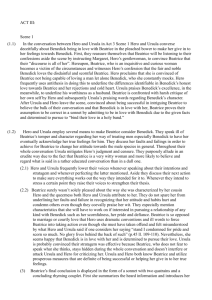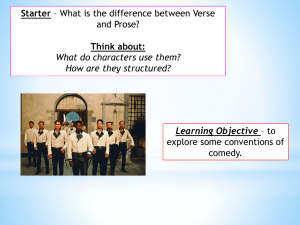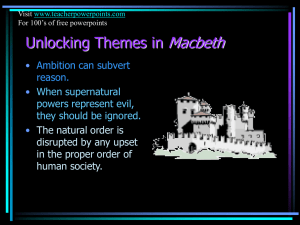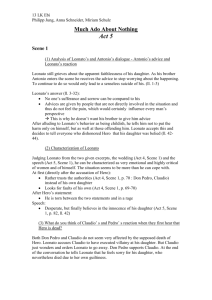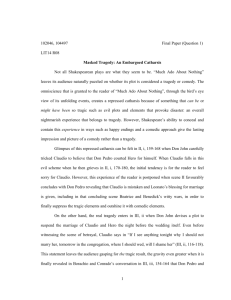Much Ado About Nothing
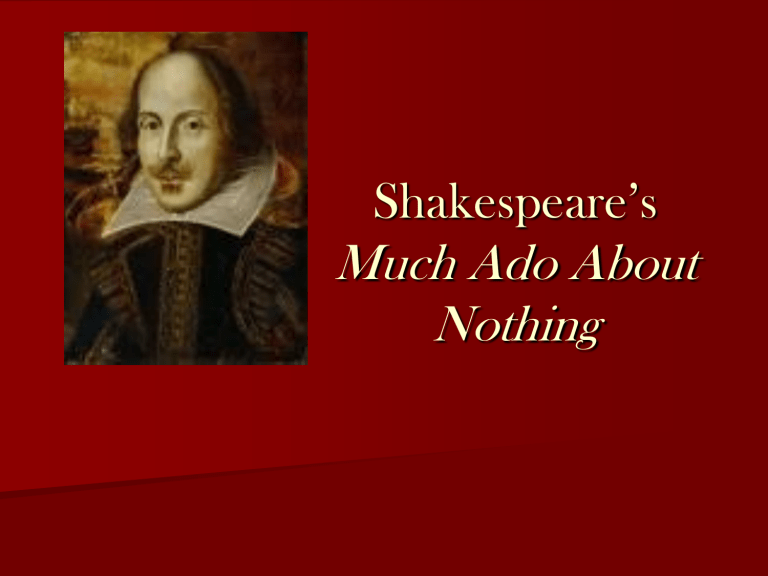
Shakespeare’s
Much Ado About
Nothing
Dramatis Personae
Don Pedro , Prince of Arragon
Don John , his bastard brother
Claudio , young lord of Florence
Benedick , young lord of Padua
Leonato , Governor of Messina
Antonio , his brother
Balthasar, attendant on Don Pedro
Borachio , follower of Don John
Conrade , follower of John
Friar Francis
Dogberry, a constable
Verges, a kind of village mayor (headborough)
A Sexton
A Boy
Hero , daughter of Leonato
Beatrice , niece to Leonato
Margaret and Ursula , attendants to Hero
Messengers, Watch, Attendants, &c.
Setting
The city of Sicily in Messina
Plot Lines in the Play
Beatrice & Benedick
Claudio & Hero
Don Pedro & Don John
The Play’s Title
Think about the title for a moment. To Shakespeare's audience, "Nothing" would have been pronounced
"noting" and meant more than just "nothing."
The word also meant "to note" as to take notice of something, or "noting" as in musical notation.
While reading, consider the following questions:
1. Is the play just a little romance about
"nothing" that is truly important?
2. What are we to think about the mis-use of "noticing"
(eavesdropping, gossip, slander, mistaken views)?
The Play
Date Written: Probably 1598.
First Performance: Probably December 1598 or early in 1599.
First Printing: 1600
Probable Main Sources: A short tale by Matteo Bandello (1485-1561), an Italian writer who became a bishop in France; Orlando Furioso great epic poem, by Ludovico Ariosto (1474-1535).
, a
Type of Play: Much Ado About Nothing is a comedy centering on the activities of two war heroes and the women they love. Shakespeare shifts back and forth between the stories of the couples–Benedick and Beatrice, Claudio and Hero–interweaving them into a unified whole.
Structure of the Play (Act I & II)
Act I:
Scene 1: Introduction of Beatrice & Benedick Conflict
Scene 2: Antonio Relays Heresay to Leonato
Scene 3: Introduction of Don John & Don Pedro Conflict
Act II:
Scene 1: The Masquarade
Scene 2: Don John’s Plot
Scene 3: The Gulling of Benedick
Structure of the Play (Act III & IV)
Act III:
Scene 1: The Gulling of Beatrice
Scene 2: Don John Lays The Trap for Claudio & Don Pedro
Scene 3: Dogberry & The Watch
Scene 4: Hero Preparing for Her Wedding Day
Scene 5: Dogberry at Leonato’s Door
Act IV:
Scene 1: The Shaming of Hero & Benedick/Beatrice
Confessions of Love
Scene 2: Dogberry’s Examination of Barochio & Conrade
Structure of the Play (Act V)
Act V:
Scene 1: Benedick Confronts Claudio & Leonato’s
Requirement
Scene 2: Benedick Tries to Write a Poem For Beatrice
Scene 3: The Death & Rebirth of Hero
Scene 4: Two Marriages
The Three Unities
The story observes the three unities– place , time , and action established by ancient Greek and Renaissance writers:
Plutarch
Aristotle
Machiavelli
(1)It takes place in one locale,
(2) It lasts about a single day
(3) It has one main story– although some view one or the other of the two love stories as a subplot

